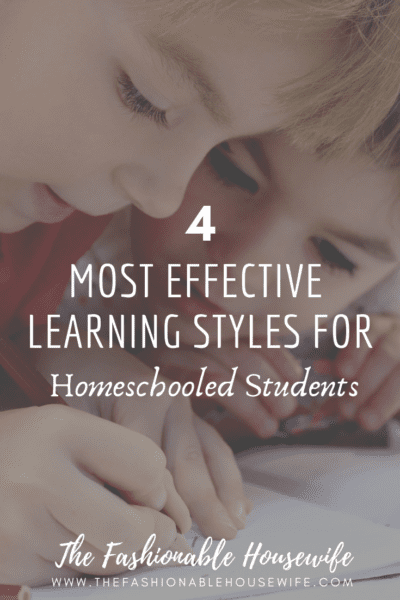
4 Learning Styles that Guarantee Success in Homeschooling
Homeschooling has gained popularity in recent years. A growing number of parents choose to overlook the traditional form of schooling or withdraw their children from the public school system. And, this trend can be attributable to various reasons.
The majority of them seek change from the negative environment that is characterized by bullying, which can have severe physical and psychological effects on children. Others are looking for an alternative to the declining quality of state-funded education.
Additionally, homeschooling is beneficial for students with special needs. They require resources that are not readily available in regular schools and can be better provided with such at home.
Overall, it is essential to understand the learning styles of homeschooled students to ensure that parents base their teaching on how their children capture and process information.
1. Kinesthetic Learning Style
Students with this style of learning are tactile, which implies they like touching everything. Consequently, kinesthetic children will identify ways of manipulating the environment to obtain information by feeling the texture, shapes, and weight of the surrounding objects.
Their parents should utilize homeschool styles that bring the content to life to improve the child’s understanding. Kinesthetic or hands-on students excel in sports, like experimenting in science laboratories, enjoy movies and adventure books, can study with loud music on the background, participate in dances and martial arts clubs, like role plays, and love building models.
However, they usually do not have clear handwriting, perform poorly at spelling, become fidgety during lessons, require breaks when studying, and might struggle with reading.
Their exploratory nature means they are likely to seek the assistance of a writing service (like bestcustomwriting.com/) to complete their assignments. The most appropriate types of homeschooling for these students include lab lessons, role-playing, field visits, memory games, and brief study periods.
Parents can encourage kinesthetic students with a pat on the back and employ tests that involve multiple-choice questions, filling blanks, and short definitions.
2. Visual Learning Style
Visual learners understand the material better by seeing it. Therefore, they prefer homeschooling methods that assist them to process information using images. Since such people are gifted in terms of spatial sense, they prefer an illustration of skills in learning.
Additionally, they prefer well-defined assignments, clear directions, and detailed workbooks. Overall, visual students think through content to understand it, develop a large vocabulary at early stages, like colors, and comprehend material better when it includes diagrams, charts, and puzzles. Therefore, the types of homeschooling curricula that are suitable for them should consist of activities such as making outlines, drawing maps, taking notes, watching videos, using underlines and highlights, and studying by flashcards.
The parents, in this case, should implement visible rewards such as stickers to encourage visual learners and test their abilities by writing essays, reading maps, diagramming, showing processes in practice, and conducting illustrative experiments.
3. Auditory Learning Style
Listening is the most critical element for students who prefer the auditory style. Therefore, parents with such children should ensure that they adopt homeschooling methods that engage the learners’ ear so that their brains retain the received information.
Ideally, the parents should utilize music, audio books, or just read the lessons’ material out loud. Auditory students should be asked to restate teachings verbally to support learning. The best types of homeschooling techniques for these students include oral reports, spoken directions, participation in study groups, and acting in staged plays.
Besides that, parents should ensure the curricula allow students to make tape recordings of notes, repeat information with their eyes closed, associate facts with words, and use audiotapes to practice languages. Parents should utilize verbal praise to acknowledge their progress and oral tests to check the child’s understanding.
4. Reading/ Writing Learning Style
Students with this learning style prefer reading books to listening exercises. They prefer taking notes instead of watching videos. Hence, parents should adopt homeschooling methods that facilitate the avid note-taking and reading skills of the students.
Therefore, the learning tips for such students include writing and rewriting words, rewording main concepts to improve understanding, and using statements to form charts, diagrams, and graphic organizers.
Additionally, parents should encourage students by allowing them to retell the learned material in their own words. Tests and exams should include essays and exercises that involve the translation of abstract concepts into words.
Bottom line
Homeschooling can be a challenging and often unpleasant experience for parents, especially when they do not understand why their children are talking when they should be writing, doodling when they are explaining content, or making paper shapes instead of completing a reading exercise.
However, understanding how they process and retain information can assist in eliminating the problem. All in all, determining the learning styles of homeschooled children is critical in enhancing the educational process.



